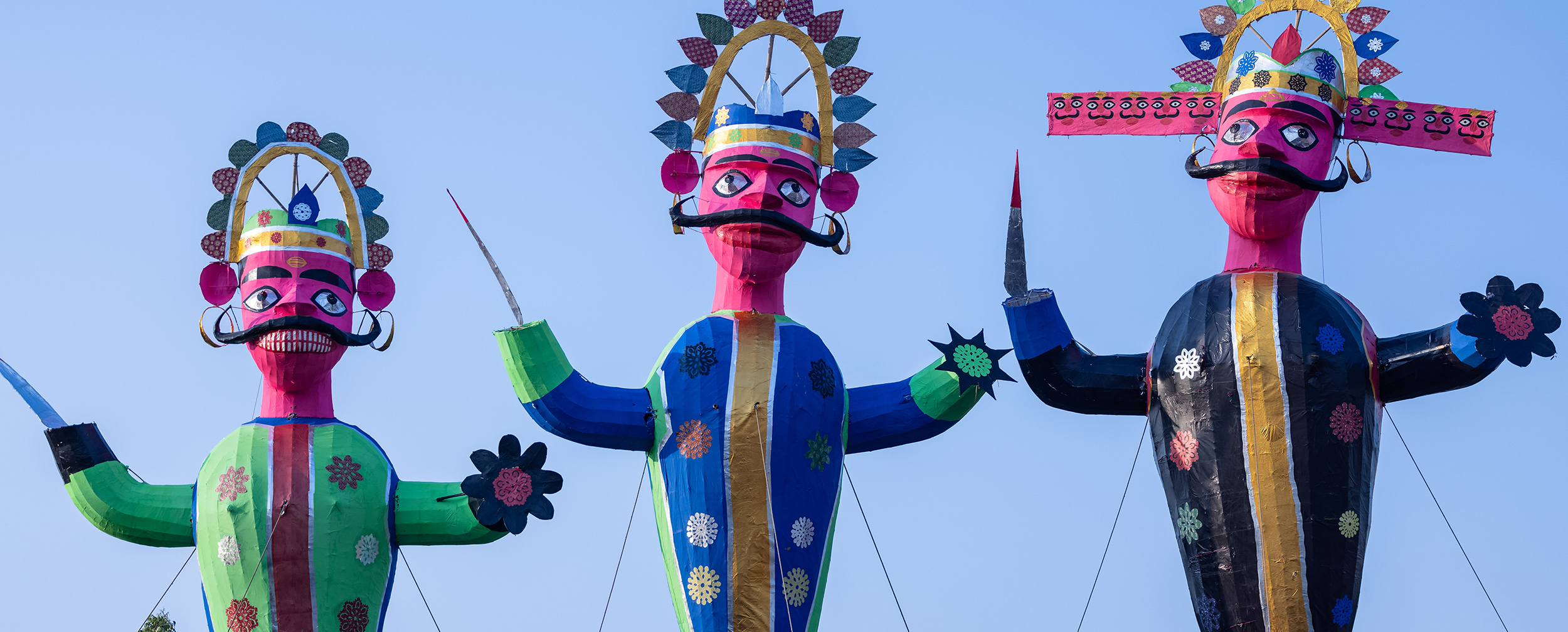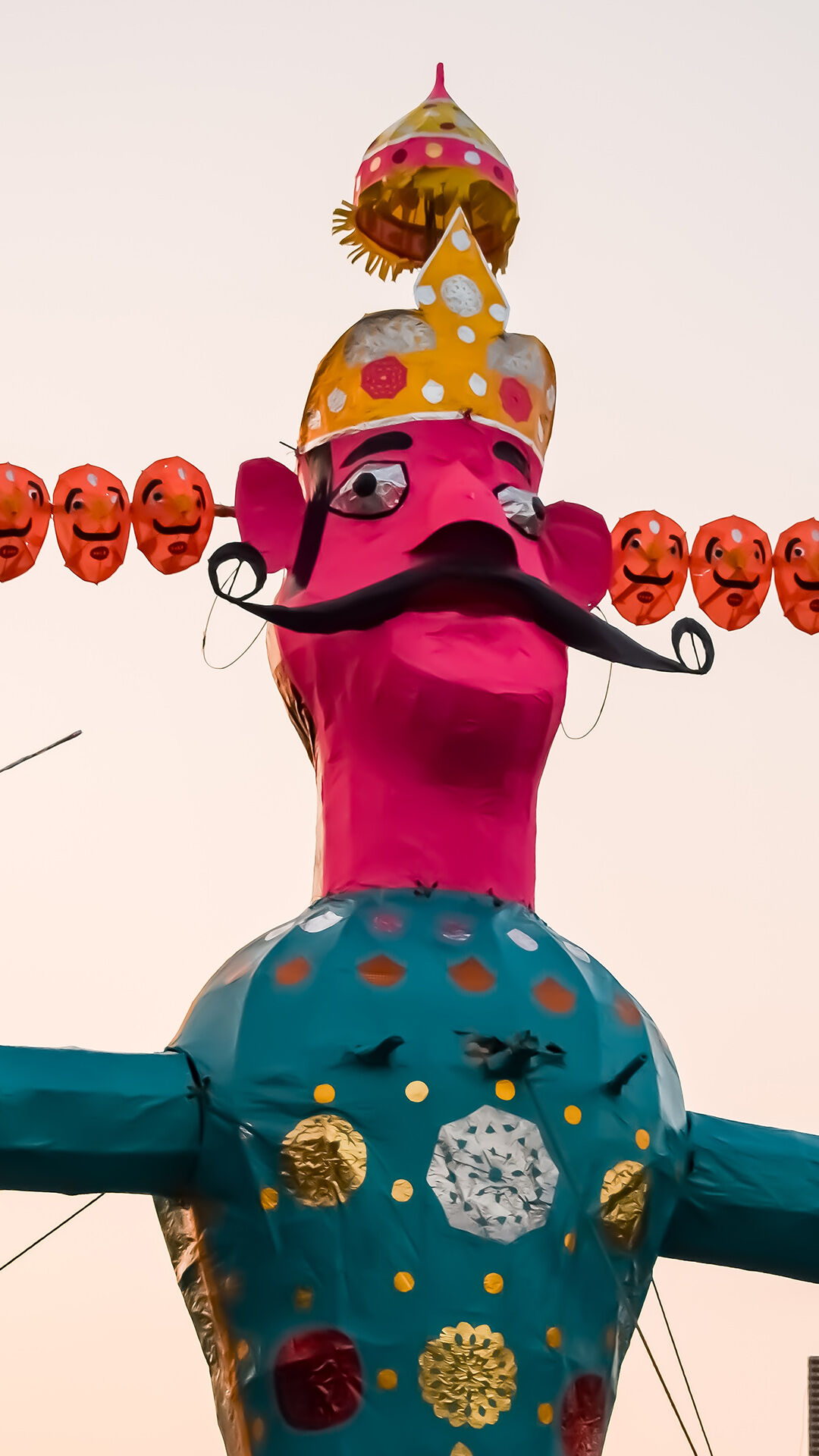STORIES BY DIWAS

Lifestyle
Dussehra Festival Celebrations Across India: Regional Rituals & Traditions
Date 10 September 2025 Reading time: 7-10 mins
The Dussehra festival, also called Vijayadashami, marks one of India's most significant cultural moments. Falling on the tenth day of Ashwin month (October 2nd in 2025), this festival brings together communities across the subcontinent in unique ways. What started as ancient victory celebrations has evolved into modern India's most diverse festival experience.
While the core message remains constant - righteousness conquering evil - each region adds its own flavour, customs, and celebration style. The beauty lies in these variations. Understanding these regional differences helps you participate more meaningfully and dress more appropriately for local events.
Significance of Dussehra Festival
The Dussehra festival carries deep spiritual meaning beyond its colourful celebrations. At its heart, it commemorates two epic victories - Lord Rama's triumph over Ravana in the north and west, and Goddess Durga's victory over Mahishasura in the east. These aren't just mythological tales; they're cultural touchstones that shape how different regions celebrate.
For modern Indians, Dussehra celebrations in India represent more than religious observance. They're about community bonding, cultural pride, and yes, showing off your festive best!
The festival encourages self-reflection about personal battles between right and wrong. Many families use this auspicious time for new beginnings - starting businesses, buying property, or planning weddings. The ten-day period offers multiple occasions to dress up, from casual morning prayers to grand evening festivities.
Dussehra Rituals
The beating of drums, the chanting of mantras, and the gathering of communities – these elements form the backbone of Dussehra across India. Despite regional variations, certain core practices unite the country in celebration.
Common Rituals Across India
Despite regional variations, several Dussehra rituals remain constant across India. Fasting during Navaratri tops the list, with devotees following different dietary restrictions based on family traditions. These nine days see increased temple visits, where dress codes often require modest, comfortable clothing. Smart festival-goers invest in breathable kurtas for men that work for long temple queues and multiple darshan sessions.
Ram Leela performances dominate Dussehra celebrations nationwide. These dramatic retellings of Ramayana episodes draw massive crowds, especially on the final night.
Unique Rituals in Different Regions
Regional Dussehra rituals offer fascinating glimpses into India's cultural diversity. Himachal Pradesh's Kullu Dussehra festival stands out for its week-long international fair. Unlike other regions' effigy burning, Kullu focuses on deity processions from surrounding villages.
Bastar stretches the festival an incredible 75 days, making it the world's longest festival. This Chhattisgarh spectacle revolves around tribal goddess Danteshwari, featuring unique forest rituals and tribal performances.
Tamil Nadu's Golu displays create mini-museums in homes during Dussehra. Women arrange elaborate doll exhibitions on stepped platforms, hosting daily viewings with different themes. The tradition includes gift exchanges among women, so carrying a small present shows cultural awareness.
Dussehra Celebrations
As the autumn moon brightens the night sky, Dussehra takes on distinctive regional characters across India's vast landscape. From the dramatic theatre of the north to the goddess worship of the east, each region's approach offers unique insights into India's cultural tapestry.
Dussehra Celebrations in North India
North India's Dussehra festival revolves around the Ram-Ravana narrative. Delhi's famous Ram Leela performances at Ramlila Maidan draw lakhs of spectators. The climactic Ravana effigy burning creates spectacular visuals. These events happen in open grounds where you'll stand for extended periods.
Choose men's bottom wear that allows easy movement - straight pyjamas or even well-fitted jeans work with contemporary kurtas. The fireworks and burning effigies mean avoiding synthetic fabrics that might catch sparks.
Cities like Varanasi add spiritual dimensions to the Dussehra festival. The ghats host special aartis, while ancient temples conduct elaborate rituals. Young professionals increasingly blend office schedules with festival plans. Many workplaces now encourage festive dressing during Dussehra celebrations in India.
Dussehra Celebrations in South India
Southern states bring royal grandeur to Dussehra festival celebrations. Mysore Dasara stands as India's most spectacular celebration, featuring the famous Jamboo Savari elephant procession. The ten-day festival transforms the city into a cultural carnival with illuminated palaces, cultural events, and the grand finale procession.
The formal nature of Mysore celebrations demands elevated dressing. Skip casual printed kurtas for more elaborate options. Rich embroidered kurtas in jewel tones match the royal setting perfectly. The evening procession and cultural programmes mean you'll be out from the afternoon till late at night - layer smartly for temperature changes.
Tamil Nadu's Dussehra centre on Golu displays and classical performances. Homes become galleries showcasing intricate doll arrangements. Andhra Pradesh and Telangana add the Bathukamma festival to Dussehra rituals. Women create stunning floral arrangements while men support with logistics and celebrations. The community gatherings feature folk songs and dances.
Karnataka's smaller towns preserve authentic celebration styles. These gatherings offer chances to experience celebrations without commercial trappings.
Dussehra Celebrations in East India
Bengal transforms into an artist's paradise during the Dussehra festival, though locals call it Bijoya Dashami. The focus shifts from Rama-Ravana to Durga's victory over Mahishasura. Elaborate pandals compete for attention with innovative themes - recent years have seen everything from space stations to environmental messages recreated in bamboo and cloth.
The emotional intensity of the rituals in Bengal touches every heart. Married women perform Sindoor Khela, playfully smearing vermillion on each other while bidding farewell to Goddess Durga. The visarjan (immersion) processions create bittersweet moments - jubilant dancing mixed with tears as devotees part with their beloved deity.
Odisha adds its own flavour to the Dussehra festival with Ravana Podi rituals. The theatrical performances here incorporate local Odissi dance elements, creating visual spectacles that rival mainstream productions.
Dussehra Celebrations in West India
Gujarat approaches Dussehra as the grand finale of Navratri. After nine nights of garba and dandiya, the tenth day brings a different energy. Morning prayers focus on seeking blessings for new beginnings. Businessmen perform Ayudha Puja, worshipping their tools and vehicles.
Maharashtra's Dussehra blends warrior traditions with modern sensibilities. The Shami tree holds special significance, with people exchanging its leaves as gold symbols. Mumbai's Girgaon Chowpatty hosts massive Ravana effigies, while smaller neighbourhoods organise intimate gatherings.
Rajasthan showcases royal heritage during the Dussehra festival with vintage car rallies and folk performances. Jaipur's palace celebrations open to public viewing, offering glimpses of how royalty marked this occasion.
The Unity in Diversity of Dussehra Celebrations in India
The Dussehra festival reminds us that while our expressions may differ, our core values remain connected. Whether burning effigies in the north or immersing idols in the east, communities come together to reaffirm their commitment to righteousness and virtue.
And don't forget to dress for the occasion! Thoughtfully selected festive kurtas for men from Diwas can help you celebrate in style. Whether you prefer subtle chikankari kurtas for daytime events or elaborate embroidery kurtas for evening festivities, the right outfit enhances your festival experience while honouring traditions.



